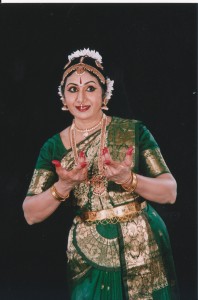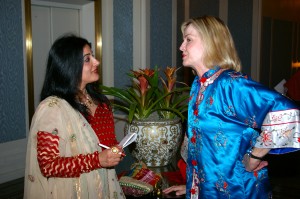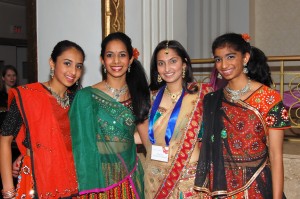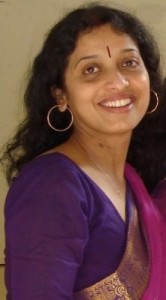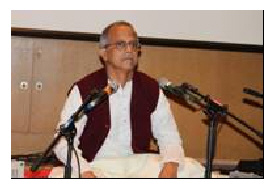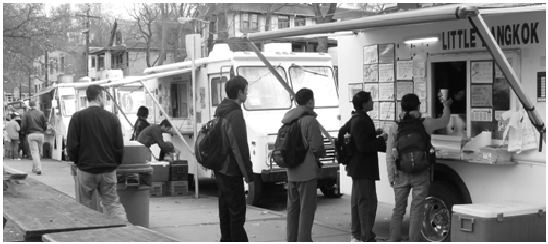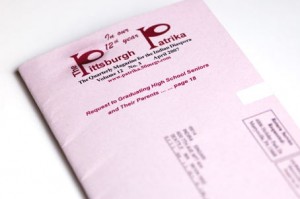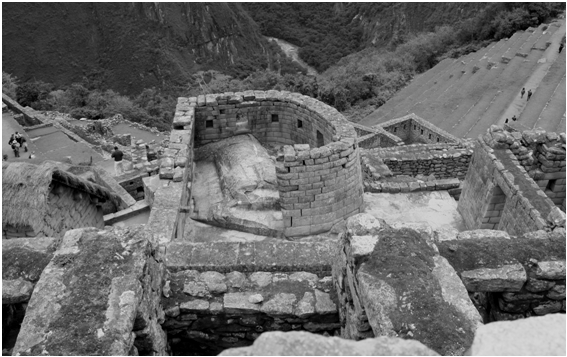Archive for category Past issues
Indian Healthcare Providers Discuss Healthcare Issues
By Rashi Venkataraman, Murrysville, PA
On April 18, over two hundred physicians gathered for their annual TAPI (Tristate Association of Physicians of Indian Origin) meeting in Coraopolis at the Embassy Suites. As part of the meeting, they had several lectures – Yoga in treating psychiatric disorders, diabetes among Indians, irritable bowel syndrome, among others — to keep themselves up-to-date. Â
TAPI also invites pharmaceutical companies to set up booths to promote their new prescription medicines. This also helps TAPI to defray the cost of organizing their meeting. Events like the TAPI Annual Dinner, as one of the drug company representatives told, “are beneficial in that it brings all physicians in one place to talk about new advances in their field.â€
With all the changes taking place in the healthcare industry, it is an interesting time for physicians nationwide, to say the least. Several segments of the industry, including healthcare providers, are anxious about the future. One physician went as far as to declare at the evening’s dinner, “Medicine is in a state of peril.â€Â
In Pennsylvania, with an aging population, two main concerns over the healthcare legislation are the shortage of primary care physicians and the threat of rationed care as a result of cuts to Medicare.
The keynote speaker was Sanford Kurtz, the Chief Operating Officer for the West Penn Allegheny Health System. In his speech on “The Future of Health Care in Pennsylvania,†Kurtz said that moving forward, it won’t be difficult for physicians to accept new ideas. “The hardest thing, instead,†he said, “will be forgetting old ideas.†Kurtz raised his concerns over rising health care costs, shrinking investments in research & development, and the impact of Information Technology in all aspects of healthcare delivery and management.Â
N.S.Srinivasa, president of TAPI, introduced the keynote speaker to the audience.
Good News! Indians are not a “Minorityâ€
Recently Carnegie Mellon University published in their in-house publication Focus (Vol. 21, No 8, Spring 2010) some statistics around the demographics of their student body and staff. Race and gender being dominant parts of social discourses in the US, the stats were broke down along race and gender:
Male/Female Ratio                 % Blacks,  Hispanics
Native Americans
Tenure-track Faculty: Â Â Â Â Â Â Â Â Â 77/23 Â Â Â Â Â Â Â Â Â Â Â Â Â Â Â Â Â Â Â Â Â Â Â Â Â Â Â Â Â Â Â Â Â Â Â 4%
Other Staff:Â Â Â Â Â Â Â Â Â Â Â Â Â Â Â Â Â Â Â Â Â Â Â Â Â Â Â Â Â Â 46/54 Â Â Â Â Â Â Â Â Â Â Â Â Â Â Â Â Â Â Â Â Â Â Â Â Â Â Â Â Â Â Â Â Â Â Â Â 6%
Undergraduates:Â Â Â Â Â Â Â Â Â Â Â Â Â Â Â Â Â Â Â 59/41Â Â Â Â Â Â Â Â Â Â Â Â Â Â Â Â Â Â Â Â Â Â Â Â Â Â Â Â Â Â Â Â Â Â Â Â 11%
Graduate students:Â Â Â Â Â Â Â Â Â Â Â Â Â Â 70/30 Â Â Â Â Â Â Â Â Â Â Â Â Â Â Â Â Â Â Â Â Â Â Â Â Â Â Â Â Â Â Â Â Â Â 4%
Notes: Blacks and Hispanics in the US form 23% of the population. At CMU 15% of undergraduates and 48% of graduate students are international.
Interestingly, CMU has grouped Asians (including Indians) along with majority Whites in the racial mix of the university body:
Tenure-track faculty:Â 91% White and Asian American
Other staff: 87% White and Asian American
When contacted, Ms. Janel Sutkus, Head of Institutional Research at CMU, told The Patrika that in the context of the demographic makeup of the nation’s population, people of Asian and Indian heritage are not under-represented in the CMU community; but women, Blacks, Hispanics and Native Americans are. That is why the university has not been classifying Asians — Chinese, Koreans, Japanese and Indians – as not minorities.
Well, simply walking along the campus, we can even speculate that these Asians are over-represented in the university’s demographics. This grouping of Asian- and Indian-Americans along with Whites is a trend what we will see more and more in other walks of life in the future.
In the American context, Indian-Americans may be a minority in numbers, but bulk of us come from what can be only called a “privileged†minority: Because of skewed immigration, a large proportion of us have better education and/or entrepreneurial skills, hence higher earnings and net worth than the national average. We give our children stable homes – so critical for their growth socially and psychologically in their formative and later years — even though most of our marriages may not be the happiest ones. We endure in our marriages for the sake of our children.
As Indian-Americans, coming out of the minority classification ought to be liberating at one level. It’s an affirmation of how far we have come since the Asian Exclusion Act of 1924. Going forward, the concept of Affirmative Action and Equal Opportunity Employment are going to be irrelevant for most of our children.
But this puts the children of gas station attendants, taxi drivers, restaurant cooks and others of Indian origin at a great disadvantage. To address this inequity, educational institutions need to look at the 1040 forms of the parents of Asian students before deciding on financial awards. This is one way to give a break to college applicants coming from socioeconomically disadvantaged homes – whether white, black, brown, and yellow.
Going forward, we are going to be judged, to quote Dr. King, “not by the color of our skin [or other features], but by the contents of our character,†to which we may also add, our intellect, skills, and how we respond to our social obligations here in the US going beyond paying taxes.
This is enough motivation for us to give back to society what we have received from Providence and from this land of opportunity.
Boyd Community Center Celebrated India
 Jennifer Schaupp, Program Director  e-mail: jenniferschaupp@gmail.com
Boyd Community Center
1220 Powers Run Road, Pittsburgh, PA Â 15238
412-828-8566 x24Â Â
On Sunday, March 21, the Boyd Community Center in O’Hara Township hosted its second celebration of Indian culture with a wide variety of activities. Thanks to the support and planning efforts of diverse community volunteers and Boyd staff, the event showcased the beauty of Indian arts and traditions and raised money for the Center.Â
The event kicked off with a film talk and screening of If It Ain’t Broke, Break It by Pittsburgh filmmaker Dr. Ravi Godse. The evening continued with yoga, breathing, and meditation demonstrations from community members and Boyd instructors, including Moni Wesner, Krishan Aggarwal, and Anjana Vijayvargiya.
The lineup of dancing and music began with the Kuchipudi dances of Kamala Reddy and her students and followed with the Bollywood and Bhangra inspired dances of Ruby Jain (also the emcee of the event) and her students. Then followed the Bharatanatyam and folk dances and music performances of Sanskruti School of Indian Dance and Music, and the Bhangra moves of Shivum Bharill.
The festivities continued with a song from Darshana Menon, musical instrument performances by Shivum Bharill and Sameer Kumar, the lively steps of Steel City Bhangra, and the classical, folk, and contemporary dances from Nandanik Dance Academy. And the culminating dance moment that brought people to their feet was Ruby Jain’s audience participation number!
Amidst the music and dance was a pleasing addition this year – the “how to wear a sari†demonstration and the sari and Indian garment sale, led by Vandana Kekre.
Throughout the Celebrate India event, the visitors enjoyed the delicious chicken and vegetable curry dishes from Taj Mahal Restaurant and the sweet treats and fruits from community member and cook Sajeda Kamal.
People could also purchase stunning jewelry from Harshita Gurnani, view slides from a Boyd staff member’s trip to India, and peruse Indian themed library books and a literary journal, a magazine, and a children’s book, all by Indian authors and editors. Children found enjoyment in the button making activity, led by Boyd’s after school instructor Alison Zapata and student Amelia Porter Bacon, and also the henna tattoos of Indu Aggarwal and family and Hindi name art with Sunder Kekre.
To add to the ambience of the event, Mahendra Shah displayed his famous cartoons, and Indian tapestries and posters of famous Bollywood actors hung on the walls of the Boyd gymnasium. Finally, the night ended with the raffling of names for assorted donated items, including tickets to Dr. Ravi’s film, a sari, a pendant, and a fresh fruit basket.
The publicizing efforts of The Pittsburgh Patrika and Deepali Zende of WRCT’s “Bombay in My Soul,†among others, helped spread the word and make successful Boyd’s Celebrate India event.
I welcome interested community members to contact me at 412-828-8566 x24 if they want to assist with the planning of next year’s India celebration.
Arts Foundation Honors Dance Teachers
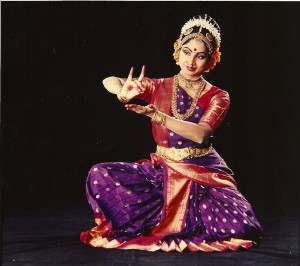
Kamala Reddy
By Radha Rao Dhulipala, Fox Chapel, PA    e-mail: dhulipala1@hotmail.com   Â
Radha Rao Dhulipala, a long time resident of the Pittsburgh Metro area, was Born and educated in Chirala, Andhra Pradesh. She arrived in the US in 1966. She has been active at the SV Temple since its early days. She and her husband Madhu Rao live in the Fox Chapel area.Â
Srinivasa Paada Ghantika (Dancing Bells on Srinivasa’s Ankles), a collaboration of North American Kuchipudi artistes, presented Premanjali at the Sri Venkateswara Temple auditorium on Saturday May 1st, 2010.
Premanjali – meaning A Loving Memorial Tribute in Sanskrit – was organized in memory of Srinivasa Prasad Gutti, known simply as Vaasu to his large circle of friends. Vaasu was an ardent lover of performing arts whose passion was to propagate Kuchipudi dance and Karnatic music among North American youth. While returning after a dance recital, his life was tragically cut short in an auto accident in 2004. He was 22.Â
To fulfill Vaasu’s wishes, his parents Varaprasada Rao and Parvathi Gutti established The Srinivasa Prasad International Foundation for the Performing Arts under the auspices of The Community Foundation of Westmoreland County.
As part of the evening, it was befitting that the Foundation honored Bharatanatyam and Kuchipudi artistes for their decades-long dedication to preserve and promote the art forms in North America as artistes themselves and as teachers. This year’s honorees were: Jaya Mani of Pittsburgh, an accomplished Bharatanatyam artist and teacher, and three prominent Kuchipudi artistes and teachers, Sasikala Penumarti (Atlanta, GA), Kamala Reddy Rajupet (Pittsburgh, PA) and Anuradha Nehru (Washington, DC).
Premanjali was woven around a collection of lovely Kuchipudi dance pieces, gracefully rendered by Bindu Madhavi Gutti, Sudha Natarajan and Vanita Lakshmi Sundararaman, all born or raised in North America. These dance pieces were choreographed by the Kuchipudi icon Guru Vempati Chinna Satyam, Smt. Bala Kondala Rao, and Kamala Reddy.Â
The program, using recorded music from several vocalists, started with a traditional Kuchipudi prayer on Saraswati rendered by Sujanasri Mulukutla with Ajit Ranganathan on the flute. It was moving to hear Vasu’s nattuvangam in this piece.
The audience got immersed in the classical Telugu and Sanskrit compositions of Sri Siddhendra Yogi (16th century), Narayana Theertha (17th century), Tyagaraja (18th century), Annamacharya (15th century) and Bala-muralikrishna (contemporary), rendered by Sujanasri, Kanya Kumari, P. Surya Rao, and Dwaram Tyagaraju.
It was difficult to decide which one was the best item of the evening. However, these stood out: Narayana Theertha’s Tarangam “Aa lokaye Sri Bala Krishnam†skillfully performed by Bindu; Balamuralikrishna’s “Sri Sakala Ganadhipa†performed by Sudha, Vanita and Bindu with good coordination; and Annamachrya’s “Okapariki okapari Oyyaramai†performed by Bindu and Sudha with quick-paced jatis. The program concluded with a traditional mangalam — Om Namas-sivaya Mangalam.
Udaya Shankara Rao emceed the program, while Meena Muthyala presented the history of the foundation, its objectives and accomplishments so far, and what it is trying to accomplish in the years ahead both in the US and in India.
Pittsburgh’s Silk Screen’s 5th Annual Gala
By Geetika Tandon, Murrysville, PA
Geetika was born and raised in Delhi, where she was a kindergarten teacher. She came to US in 1995 after getting married and moved to Pittsburgh in 1996. With her 13-year old daughter Sunaina and 10-year old son Sachit, Geetika also runs two businesses Minuteman Press in Plum and Highflyer Bungee at Pittsburgh Mills Mall. She likes to listen to music, cook and spend time with my friends and family.
Pittsburgh is not the first US city that comes to mind when one thinks of Asian cultural diversity even though Pittsburgh has many ethnic groups from Asia. One of the great events that highlights this diversity and draws attention and awareness of Asian culture in the Pittsburgh region is the annual Silk Screen Festival, founded in 2006 by filmmaker and artist Harish Saluja. The festival celebrates Asian culture and gives Pittsburghers an opportunity to enjoy the rich cultural cornucopia of Asia. The festival also highlights the ethnic diversity of the region, which is a source of its great strength.
This year the Silk Screen Festival 2010 kicked off with the opening night film Cooking With Stella, followed by the Silk Screen Red Carpet Gala hosted on Friday, May 7, 2010 at the Omni William Penn Hotel.Â
The gala was a vibrant and beautiful cultural evening made possible by the hard work of its Executive Director Harish Saluja, operations manager Katie Jones, film programming director John Rice, members of Silk Screen organization and many volunteers.
The Silk Screen gala evening was full of entertainment featuring performances from across Asia. There was Tadashi Kato’s Japanese contemporary dance, Akshay Hari’s Bollywood song, Middle Eastern belly dance, little girls’ Tibetan Dance, and a depiction of Chinese Dragons in dance. And of course, the Indian Bhangra.
WTAE’s anchor Sally Wiggin, as the emcee kept the event moving without letting it sag even for moment.
People having a good time at the gala were as diverse as the performers — people from India, China, Japan, Korea, Sri Lanka, and Mainstream America. Also present were the director of movie Bombay Summer Joseph Mathew Varghese and the main actor Samrat Chakrabarti.
I must say this gala was a showcase of international fashion with people wearing authentic clothes and beautiful jewelry. This gave us all a chance to see what’s new in fashion this season throughout Asia.Â
What can I say about the food!! It was diverse and delicious. The various ethnic restaurants of the region such as Indian Garden and Taj Mahal had their food stalls for people to feast on. There was a lot to choose from. Middle Eastern preparations — hummus and baba ganoush from Istambul Grill – was super. The Japanese food prepared and served by Ai Kato, one of the volunteers who moved here from Japan last year, was excellent.
The Sri Lankan Community coordinator Ransie Ratnatunga wanted to convey a very special thanks to The Silk Screen organization for making Sri Lankan film a part of this festival. She wishes a great success for 2010 festival and many more to come.
Fun did not end with cultural program and food. The night continued on for two hours with an open dance floor with very upbeat and fun music. If you missed it this year, be sure to check it out next year. For more information, please check out the website silkscreenfestival.org.
Ramakrishna Vedanta Ashrama of Pittsburgh
Ramakrishna Vedanta Ashrama of Pittsburgh was established in September 2009 with the help of a handful of devotees.  Swami Swahananda, a senior monk of the Ramakrishna Order of India, the minister and spiritual leader of the Vedanta Society of Southern California inaugurated the Ashrama. The active participation of devotees will someday make this place thrive with activities that will benefit all community members. Though the Ashrama started in a small home in Monroeville, it is growing in popularity with larger and larger gatherings, so the facilities need to be expanded. In a short period of time, the Ashrama has achieved a lot. The devotees dedicate much time and energy to make this place as welcoming as possible.  The Ashrama truly seems to be God’s gift; it was never expected such a thing would come in existence, though the city of Pittsburgh is noted for its numerous temples. The dedicated efforts of the volunteers have created a special place to nurture our spiritual activities.Â
On Saturday March 27, the birthday of Sri Ramakrishna Paramahamsa was celebrated at the Ashrama (417 Beatty Road, Monroeville). Although he was born on February 17, 1836, his birthday celebration had to be moved because of inclement weather during February and March.  It was a beautiful spring day and the activities started around noon with Puja and Aratrikam. At 5:00 pm the evening Puja (Sandhya Puja) took place followed by Aratrikam. The entire building resonated with the hymns composed by Swami Vivekananda – “Khandana Bhava.â€Â Devotees poured in from all around Pittsburgh and its surroundings with some worshippers driving over two hours to get there. They all came to witness this happy occasion and to be blessed by Swami Brahmarupananda of Vedanta Society of Greater Washington who was present there. Swami’s talk on Sri Ramakrishna Paramahamsa began around 6:00 pm. He described the spiritual teaching of Ramakrishna based on the concept that everything is pervaded by God. He mentioned how Ramakrishna would only see good things in people, whether they were good or bad. He outlined a set of nine instructions Sri Ramakrishna gave to the householders: (a) repeat God’s name time and again, (b) chant His glories, (c) seek holy company, (d) go into solitude, (e) meditate on God, (f) discriminate between the real and the unreal, (g) focus on God while performing duties, (h) develop a deep yearning for God, and (i) be truthful. After his discourse, there was a question and answer session, followed by devotional songs performed by some of the devotees. The event ended with a sumptuous vegetarian dinner.
A Mother’s Dream will continue….
Posted by admin in April 2018 on March 26, 2010
By Ameeta Ambe for Friends of Nandini, South Hills, Pittsburgh.
As many of you may know, Nandini Mandal – Principal and Artistic Director of Nandanik Dance Academy, in South Hills, Pittsburgh, has been going through a trying phase in her young life of thirty nine years since early 2009. She was diagnosed with Myelodysplastic Syndrome (MDS) in early 2009 which, progressed to Acute Myeloid Leukemia, a type of cancer, within a few months. With bone marrow transplant as her only alternative for a chance at recovery she spent some stressful months awaiting a bone marrow match.Â
Nandini put her dreams on hold while she courageously & admirably fought through the tribulation of finding a match & getting the transplant at NY’s Memorial Sloan Kettering Hospital.Â
Thanks to the generosity of one kind soul, an angel who, by donating the matching bone marrow made the difference of life to Nandini! Â She is now able to go back to dreaming of a life with her 2 beautiful young girls Roosha (11yrs) and Raka (3yrs), who need their mommy!Â
We request the readers of this story to take the first step of registering for a Bone Marrow donation. You could be the one saving a life too and making a difference to someone’s dreams. To get answers to any of your questions and concerns about Bone Marrow donation, visit www.marrow.org. Be an informed donor and hold the power to save a life.
After surgery at the Memorial Slaon Kittering Hospital in New York, Nandini stayed in New York at an interim housing provided by Hospital, trying to return to her independent self. In early March, Nandini returned to Pittsburgh in great spirits. Her further recovery will be overseen and followed up by transplant doctors at UPMC.Â
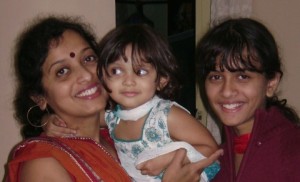 Nandini conveys her heartfelt thanks to the community in Pittsburgh and beyond who prayed for her well-being and speedy recovery in her trying time. Your blessings inspire Nandini to fight the fight of her life.Â
Nandini conveys her heartfelt thanks to the community in Pittsburgh and beyond who prayed for her well-being and speedy recovery in her trying time. Your blessings inspire Nandini to fight the fight of her life.Â
The website developed by her friends www.friendsofnandini.org, continues to update the community’s bighearted support not only financially but also through the volunteering efforts at the different events put forth by the Friends of Nandini.Â
We, the friends of Nandini profoundly thank all those who have come forward and helped us help Nandini and truly appreciate all your assistance in different areas. We extend our thanks to several local Indian restaurants & Indian stores that donated food, gifts as well as gift certificates towards making the Holiday India Fair/Indian mela held on Dec 5th 2009, a grand success. Helping someone in the time of need can be a joy – and we are gratified that several of us in Pittsburgh have come forward to do our best. We will keep you informed in the days ahead on our future activities and events.
Please see how you can continue to help… …
- To volunteer, email volunteer@FriendsOfNandini.org.
- Â To donate online, visit www.transplants.org search for Nandini Mandal.
- To donate by check, make check payable and mail to:
NFT Pennsylvania Bone Marrow Fund
5350 Poplar Avenue, Suite 430
Memphis, TN 38119
Please write ‘In honor of Nandini Mandal’ in the memo line.
Chhandayan’s Delightful Musical Evening
Posted by admin in April 2018 on March 26, 2010
By Samar K. Saha      e-mail: sksaha@uss.comÂ
The lovers of Hindustani Classical music were in for an autumn treat on the weekend of November 14, 2009. Chhandayan, with grant support from the Pennsylvania Council on the Arts, presented a memorable evening of Hindustani classical vocal music at the Graduate School of Public Health auditorium in Oakland. Â
The highlight of the show was a vocal presentation by Pt. Sandip Ghosh of Kolkata, well supported by Pt. Samir Chatterjee, Director of Chhandayan, on the tabla. Dipanjan Das of Pittsburgh provided the vocal and the harmonium support.Â
 His first presentation was a bara khayal in the raga Bihag. The gift of Sandip Ghosh’s melodious voice was detectable as soon as he started his Alap setting the listeners in a relaxed mood. As the presentation moved into jor, the serene and reposeful feeling of the raga was engulfing the whole auditorium. The Bandish Jiske Dil Par Gujri started in vilambit ektal with a romantic mood and this feeling kept on building up through swift, bold, and intricate tans as the tabla took the bandish into a higher tempo sitarkhani beat. Ghosh finished the raga in a tarana that was both mesmerizing and intoxicating. The standing ovation at the end was the singer’s reward for a well rendered presentation.Â
The listeners were in for more with his next piece – a chhota hhayal in raga Jog Kaus. Peeray Parai… was presented in a classic Kirana style. The finishing piece was “Mohe Lagi Lagan Guru Charanan Ki†— a bhajan in raga Shyam Kalyan in Teen Tal.
The other part of the evening presented at the beginning of the program was a jugalbandi – a vocal presentation by Nidrita Mitra Sinha of Pittsburgh and Soumya Chakraverty of Virginia on Sarod. Asish Sinha and Debupriya Nayak accompanied the artistes on the tabla.Â
We have heard jugalbandis before; but a vocal–sarod jugalbandi is uncommon. Such a performance demands a lot of versatility and virtuosity since the nature of human voice and a music instrument like Sarod and their scales are so different.Â
The artistes started with an early evening raga — Puriya Dhanashree with a slow meditative Alap moving onto Jor. The vilambit gat/bandish in addha tal  Mohe Lagi Lagan Guru Charanan Ki was finished with Shyam Shyam Ratata in drut teen tal. The duo presented their second composition – a bhajan in raga Desh in Dadra tal. The festive and joy-ous outburst of emotion of the raga poured out in this Shiva vandana Gale Bhujanga Bhashma Anga.
It was a courageous jugalbandi experiment. It would be an accomplishment if the artistes can carry this experiment to a level when the voice and the instrument fuse and merge with each other. The resonant tone of the Sarod was missing in this part of the show. It sounded too tinny. It was not clear if this was due to improper sound mixing or due to instrument tuning. Â
This scribe hated to see the evening end. His only regret was the poor turn up. Chhandayan should be hailed for bringing such an enjoyable program. Pittsburgh residents should be urged not to miss out on such a beautiful program. After all, the Indian classical music based on melody and rhythm is one of India’s biggest contributions to the world. n
West Bengal’s Jyoti Basu (1914 – 2010): In his long Marxist rule, parts of state withered away, literally!
Posted by admin in April 2018 on March 26, 2010
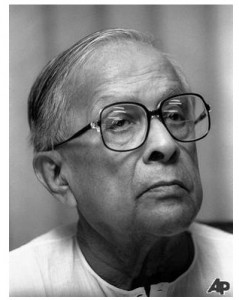 When Jyoti Basu, 95, the Marxist leader from West Bengal, died in January 2010, obituaries in leading English dailies — The Hindu, Hindustan Times, and Times of India and others — called him a colossus, a towering personality, pragmatist with a managerial style, and the prime minister India never had. UK’s Guardian admired his “tempered pragmatism.â€
When Jyoti Basu, 95, the Marxist leader from West Bengal, died in January 2010, obituaries in leading English dailies — The Hindu, Hindustan Times, and Times of India and others — called him a colossus, a towering personality, pragmatist with a managerial style, and the prime minister India never had. UK’s Guardian admired his “tempered pragmatism.â€
While the leading English dailies were praising him to the skies, they were rather muted in Basu’s failings. Hindustan Times’s writing was typical: “His tenure as chief minister was not without allegations of corruption, especially against his industrialist son. But these remained just allegations. While the agrarian reforms in West Bengal were hailed as a model across the country, Basu was widely faulted for his poor showing in various other sectors including industry, education and health.â€
Basu was West Bengal’s chief minister for 23 continuous years, a record unmatched in India, till he relinquished the job several years ago on account of senility.
While the Indian Media was praising Basu to the sky, the blogosphere and the comments underneath the obits were brutal in criticizing Jyoti Basu: “Jyoti Basu made West Bengal Waste Bengal,†“He died 30 years too late,†and “Thank god he did not become India’s prime minister. He would have made the whole of India a waste land.â€
It should be noted that in the period after India’s Independence in 1947, Calcutta (Kolkata now) and West Bengal were models for others to emulate in India. So, people participating in the blogosphere could be biased. Mostly they are the Bengali intelligentsia, its Bhadralok. Basu himself was paradoxically a Bhadralok, son of a doctor, and himself a barrister from England.
To have access to high-speed internet in India, you need to have some level of education and access to resources. So, I was looking for more objective measures on where West Bengal stands today, after over 30 years of proletarian Marxist rule with the “pragmatic manager†Jyoti Basu at the helm.
Here are the observations of Praful Bidwai, a Delhi-based peace activist and a left-of-center writer. Bidwai’s article under the caption “Jyoti Basu’s Mixed Legacy†was published on January 23, 2010 in the The international News www.thenews.com.pk).
- ˜ The percentage of rural households in India not getting enough food every day in some months of the year is highest in West Bengal (10.6%), worse than even Orissa (4.8%), perhaps India’s poorest state.
- West Bengal has more than 900,600 school dropouts in the 6-14 age group, higher than Bihar’s nearly 700,000.
- Of India’s 24 districts which have more than 50,000 out-of-school children, nine are in West Bengal.
- According to India’s Human Development Report (2004), in West Bengal, spending on, and access to, health services stagnated.
- Antenatal care, women’s nutrition, and doctors and hospital beds per 100,000 people in West Bengal are below national average.
- West Bengal hasn’t opened a new primary health centre in a decade.
- India’s worst recent food riots occurred in West Bengal when starving people raided the stores of corrupt ration-shop owners, all CPM members.
- Meanwhile, some of the gains of Basu-initiated land reforms have eroded: 17% of registered tenants have lost their land and another 27 percent are vulnerable.
- Under Basu’s Marxist rule, quality of higher education for which Bengal was famous, nosedived.
- Under Basu’s reign, his party cadres permeated all state bureaucracy and held sway, and he could not control or discipline them for their wayward behavior.
This is his “mixed†legacy. Even though this assessment will not be endorsed by all, a large section of educated Indians, and Bengalis in particular, believe that he was responsible for bringing down West Bengal to its knees, something even the British colonial power could not do.
Basu’s Marxist rule caused flights of educated people, capital and industries to the other states and sapped Bengal of its vitality. These Bengalis are not going to return to Bengal anytime soon.
His son Chandan Basu became an industrialist in Bengal when the state was under Marxist rule with the Marxist Jyoti Basu at the helm. Chandan Basu’s high-HP imported SUVs were confiscated for nonpayment of import duties. So much for Marxist proletarian ideology.
Basu’s spiritual mentor, China’s Deng Xiaopeng, abandoned Marxist ideas on production and distribution of goods and services and embraced what is now called “totalitarian capitalism.†But Basu saw no reason to change his strategy. So much for being “pragmatic manager.â€
English dailies even made a virtue of Basu’s atheism implicitly attributing it to his Marxist ideology. But atheism is not something that Indians had to learn from Marx, if only the anglicized Indian writers and editors  take their time to know India’s own philosophical traditions.
Marxist believe that in their Utopia, “state would wither away.â€Â In Basu’s Bengal, on many important measures the state indeed withered away. But the Marxists’ classless Utopia was nowhere in sight.   —  By Kollengode S. Venkataraman
Chennai Music Season
Posted by admin in April 2018 on March 26, 2010
Chennai Music Season Â
With a Few Apaswaras (off-key notes) Â
By Manjeri Raman, Savannah, GAÂ
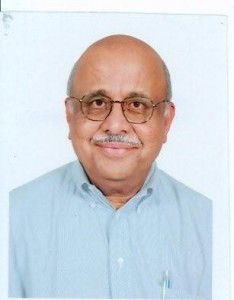 Manjeri Raman was a long-time resident of Robinson Twp. before he moved to Savannah, GA. Here are his observations on the last Chennai Music “Season.â€
Manjeri Raman was a long-time resident of Robinson Twp. before he moved to Savannah, GA. Here are his observations on the last Chennai Music “Season.â€
I moved to Chennai in March, 2009 for an one-year assignment with a chemical company. One of the attractions of the move was the famous annual music festival in the Tamil month of Marghazi (the solar month Dhanush) between mid December and mid January. The unofficial season starts in November itself with over sixty Sabhas (music associations) in the city organizing music concerts and dance recitals.
 This could very well be the world’s biggest music festival – over 4000 concerts in the greater Chennai metro area over eight weeks. Typical schedule at the most famous venue, the Madras Music Academy (The Academy for locals), has five concerts/day between 9:00 AM and 9:30 PM.
 The schedule follows a strict hierarchical grading of the performers. The prima donnas (male and female) get the evening prime-time slots with ticket prices steep by Indian standards. The aspirants get the rest of the slots with their own pecking order. Obviously, there is cut-throat competition to get on stage at the Academy and the successful people usually meet the basic standards. But connections, influences, recommendations, and local support also help! You can see varying shades of nepotism. Â
 A significant number of NRIs, particularly from the U.S., is in attendance with the books and other aids to understand the ragas and other nuances of Karnatic music. NRI artistes particularly from the US, Europe, and Singapore, taking advantage of the favorable exchange rates, have their own sabhas — Hamsadhwani and Musicians Living Abroad or MLA. Since it is not easy to get to go on stage in native sabhas, many of these NRI artistes perform in their own sabhas with other NRIs in the audience and later claim that their performance in Chennai was well-received by its discriminating and eclectic audience!
 Another strange trend, particularly in Bharatanatyam, and may be in other genre as well, is that often, the dancers pay the sabhas — and not the other way around — to get a chance to go on stage. Essentially, dancers with affluent parents/husbands, or their own resources pretty much buy their way to embellish their glitzy brochures.Â
 Locals complain that the NRIs garner the high-end tickets (inexpensive by the NRI standards) depriving the more dedicated Chennai music lovers affordable access. I had coffee one day and at my table were desis from California, Pennsylvania, New Jersey and Toronto!!
 I also met Mr. S. Raman, a retired government official from New Delhi who comes annually and attends only a selected number of concerts. He picks concerts with singers who he thinks perform according to the old Karnatic music traditions. He avoids the marquee crowd pullers. He also listens to young artists who get to sing for only ninety minutes. He was lamenting how the age-old Music Academy has changed for the worse with crass commercialism with sponsoring companies gaudily promoting everything under the sun in the premises!! Corporate logos as stage backdrops for saris, jewelry, hotels, and banks are jarring distractions.Â
 For many Chennai socialites, like socialites everywhere, attending concerts in the season is an annual ritual. Many women come in their best silks and diamonds. Often, they never miss an opportunity to engage in light conversations about the music just to make others aware that they are not totally ignorant!
 In the middle of a performance, sometimes, artistes greet the VVIPs arriving very late as they cavalierly glide into their front-row seats. This misbehavior both by the artistes and by the VVIPs galled me! Another bad, rude feature in Karnatic recitals is audience leaving the auditorium during the percussion solo (called tani avartanam). They return after a coffee or a bio-break. These “hoary†traditions continue.
 Now I want to vent my ire on the most obnoxious audience misbehavior. Unlike western concerts or operas where entry to the auditorium is limited to the breaks between acts or songs, the audience here can drift in and out as they please. We see this in the US too, to a lesser degree.
 For star performers, all seats are sold, and late comers’ empty seats are scattered throughout. Late comers for these seats drift in at their leisure right in the middle of the recital. It becomes an annoying experience to witness a parade of rear ends disturbing you as they walk in front of you. People walk in 90 minutes late for a 150-minute concert!!
 More than 50% of people leave the auditorium before the concert formally ends. They are usually in great hurry, and you need to be careful. You can be trampled! What amazes me is that the people who behave like this are the well educated and the well heeled!!
 There is no consideration to provide special facilities for handicapped people. In fact, there are many hazards for them to climb and cross hurdles to get to their seats right from the moment they enter the main gate.
 It is not unusual to see persons, particularly women, offering a loud greeting to someone sitting about three rows ahead of or behind them and enquiring about their welfare! I tried to enforce some discipline, most of the time failing in my attempt. Only genetic engineering offers hope.
 In spite of all this, I did enjoy the twenty-plus concerts, having learned to live through these aggravations.
Factoid in US-India History
Posted by admin in April 2018 on March 26, 2010
As an aside, this Church-initiated inquisition was the only religious persecution experienced by Jews within India, who migrated there after the destruction of their temple in the Siege of Jerusalem in the First Jewish-Roman War (70 CE).
After achieving independence in 1947, the Indian government started negotiations to take Goa back. The negotiations failed, which led to India’s successful armed action in 1961. The US reaction is worth noting: Adlai Stevenson, the US Ambassador to the UN at that time, condemned the Indian government action, and demanded that all Indian forces be unconditionally withdrawn from Goa!
Remember this the next time you hear the lyrics of the US national anthem, which, in the American context, rightly glorify the US defense of Fort McHenry against the British Royal Navy in the Chesapeake Bay.
For more reading, read: “Into the Mainstream,” by R. N. Saksena, Abhinav Publications (2003) ISBN: 81-7017-005-2
Bhangra in the Burgh Blasted the Cold Away !
Posted by admin in April 2018 on March 26, 2010
Bhangra in the Burgh Blasted the Cold Away
They also raised money for a Children’s Charity
As January 2010 unveiled, students returned to Oakland after the year-end holidays. The frigid days and deep-freeze nights made their life miserable in the campus. Understandably, if they sought some escapist entertainment, they didn’t have to go too far. It was right there in Oakland itself.Â
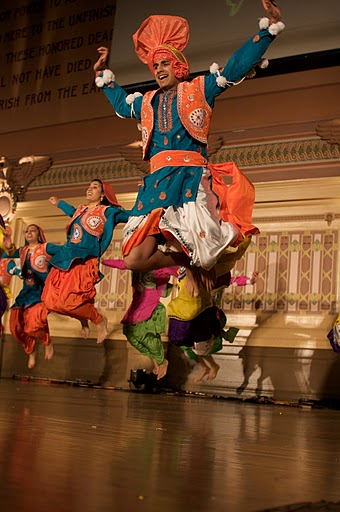 The 3rd annual Bhangra in the Burgh, held on Saturday, January 30 in Oakland despite the temperature in the teens, provided much-needed relief. Over 2500 people, mostly college students, both desi and non-desi and many older people converged at the cavernous Soldiers and Sailors Hall.
The 3rd annual Bhangra in the Burgh, held on Saturday, January 30 in Oakland despite the temperature in the teens, provided much-needed relief. Over 2500 people, mostly college students, both desi and non-desi and many older people converged at the cavernous Soldiers and Sailors Hall.
Around 150 participating students, equal numbers of boys and girls, came from eight neighboring universities — Drexel, Cornell, Rutgers, Virginia Commonwealth, Georgetown, George Mason, Univ. of Virginia, Univ. Michigan (Ann Arbor) and of course, the home team CMU, hosts for the evening. They were everywhere — in the lobby, on stage, off stage – decked out in the bright, shiny, and colorful Punjabi costumes.Â
The night provided raucous entertainment as an enthusiastic audience joined in the beats of songs rooted in Punjabi agrarian and rural ethos with liberal sprinkling of kudyan and munde (girls and boys) in the lyrics.
The energy of the dancers was unbelievable as they effortlessly defied gravity with their airborne jumps. One could burn calories simply watching these young men and women in flight in their dance routines.
At the end, Virginia Commonwealth U students were the winners.
CMU undergraduate students Gurmukh Singh Chhabra, Suraj Baxi, and Vishal Agrawal, organizers of the event, with help from several volunteers, raised over $14,000 through the sales of tickets and snacks. The money went this year to Children’s Home of Pittsburgh (www.childrenshomepgh.org). Subway, Bruegger Bagels, and Starbucks donated food for the participants’ green room. India Garden in Oakland provided samosas — a must for this event — at discounted rates to help them raise money.
When contacted, Gurmukh said, “I profusely thank the CMU’s Offices of the Students Affairs, Students Activities, and the Undergraduate Students Senate and the Executive Board of the Bhangra in the Burgh for making the event a great success. I also acknowledge CMU’s Jared Cohon’s interest in these activities.â€
If you haven’t experienced the energy of this annual event, you only have to wait until the next January.  Â
Participate in the Census 2010 Exercise
Posted by admin in April 2018 on March 26, 2010
In the early decennial censuses — the first one was in 1790 — the purpose was for apportioning the number of seats in the House of Representatives in the Congress for each state. It was, and still is, based on the state’s populations in relation to the whole nation’s population.
 Consider this: As a percentage of the nation’s population, Pennsylvania’s population has decreased from 6.9% in 1900 to 5.0% in 2000, to 4.1% in 2008. With the total number of House of Representatives in the US Congress held at 435, this has resulted fewer number of House members elected from Pennsylvania.
Consider this: As a percentage of the nation’s population, Pennsylvania’s population has decreased from 6.9% in 1900 to 5.0% in 2000, to 4.1% in 2008. With the total number of House of Representatives in the US Congress held at 435, this has resulted fewer number of House members elected from Pennsylvania.
Over the years, countless government agencies at the federal, state and local levels, nonprofits, and private businesses have come to rely heavily on the census data for their many decisions. For example, the federal gov-ernment annually distributes to states around $400 billion grant monies based on the states’ population demographics (number, age, gender, race, income/poverty data and others).
State/local governments use the same census data for drawing the boundaries of electoral districts, funding monies for libraries, building/widening roads and bridges and schools, mass transit decisions, and deploying ambulances, police cars and fire trucks for managing crises. Private businesses use the same census data for locating their offices, warehouses, hospitals, and developing product and marketing strategies… … …
This is where your participation in the US census becomes critical. This year, in March/April, all of you will receive a simple census form containing 10 easy questions. Please complete this form and mail it without any delay.
But there are more reasons why you should do it. At a personal level, being an very small ethnic minority, we need to know where we stand in the big picture of the region’s/nation’s demographics. Often, many of us have an exaggerated idea of our presence. More on this in a separate article in a future issue.
In the 2010 census, the US Census Bureau counts people tracing their heritage to India as a distinct group under the category Asian Indian.
If your roots are in India, remember to check the box against Asian Indian on Question 9 in the census form. Pakistanis, Bangladeshis, Nepalis and Sri Lankans need to check the box Other Asians and write their place of origin in the box.
An important point: When you fill out the census form, list all people living in your household irrespective of their legal status – citizens, immigrants, students from India, visitors, workers on H1B visa, or even undocumented people.
The census form does NOT ask information on the legal status of the person. The Census Bureau’s mandate is to take a snap shot on the head count and gather the statistics only around the number of people, their ages, and ethnicity. The Census Bureau does not and will not share personal details they collect with any other government agency.
As you see, census data is important in countless ways when dealing with federal, state and local governments, or other organizations. Completing the census form should take only ten minutes. Help yourself and your community by participating in this national exercise.
If we do not participate in the census due to negligence/lethargy, while all others participate, we won’t be counted. And we stand to lose big time as individuals, and also as a local community and citizens at large. So, our own self-interest also compels that we take this seriously.
Ha! and Hmmm…
Posted by admin in April 2018 on March 8, 2010
By Kollengode S. Venkataraman
Â
A florist goes for a haircut in Bangalore. When he goes to pay the barber, the barber says, “I cannot accept money from you; I am doing community service.” The next morning the barber finds some jasmine strands at his door. A fruit vendor goes for a haircut and the barber again refuses to take the money. A few days later, the barber finds a basket of seasonal fruits at his door.
On a Saturday a software guy goes for a haircut. The barber again refuses money saying it was a community service. The software engineer thinks, “Umm. Finally, these guys realize the importance of our work.”
The next Saturday when the barber goes to open his shop, he finds a bunch of software engineers waiting for a free haircut, with the printouts of forwarded e-mail of the free haircut.
Â
Late on a Saturday night, a Wisconsin woman called 911 to report a drunk driver — herself. In a recording of the call, the dispatcher is heard asking Mary Strey, 49, “You behind them?”
Strey answers, “No, I am them.” The confused dispatcher asks, “You am them?” “Yes, I am them.” The dispatcher then tells Strey to pull over so she doesn’t have an accident.
Strey was charged last week with driving drunk and operating a vehicle with a blood-alcohol level of 0.1 or more. Strey was heard on the call asking if she should turn the car off and put her hazard lights on.
Â
Note: This is not a fabrication. this is a true story.
Desis in National News
Posted by admin in April 2018 on March 8, 2010
By K.S. Venkataraman
Spanning three continents in his academic trajectory, Venkatraman Ramakrishnan at Cambridge University in England received the chemistry Nobel for 2009.
True desi ishtyle, soon after his getting the Nobel, according to the Press Trust of India, the Indian news organization, Ramakrishnan’s e-mail account for days was clogged with congratulatory messages from Indians making him spend over an hour to clear them. A disenchanted Ramakrishnan aired his frustration to PTI, “There are also people who have never bothered to be in touch with me for decades who suddenly feel the urge to connect. I find this strange.”
It is perfectly natural for people to have an urge to bask in the glory of others with whom they can identify in terms of faith, race, ethnicity, culture, nationalities, and languages: He/she is also a _______ just like me); or through universities, schools attended or memberships in exclusive clubs, especially if you can use it to your advantage (He/she is also a ________ alumnus or alumna like me) etc.
But then, we need to keep things in perspective. The following was attributed to Einstein:
In 1921, Albert Einstein presented a paper on his then-infant theory of relativity at the Sorbonne, the prestigious French university. “If I am proved correct,” he said, “the Germans will call me a German, the Swiss will call me a Swiss citizen, and the French will call me a citizen of the world. If relativity is proved wrong, the French will call me a Swiss, the Swiss will call me a German and the Germans will call me a Jew.”
If you have doubt, go and talk to the hedge-fund billionaire Raj Rajaratnam, another desi, who was in the news for entirely wrong reasons. Raj Rajaratnam, the founder of Galleon Group, was arrested last fall for alleged insider trading involving tens and tens of millions of dollars. His alleged desi accomplices are Rajiv Goel, an executive at Intel’s treasury department, and Anil Kumar, an executive at McKinsey & Company. In fairness to Rajaratnam, he also had other mainstream American accomplices as well.
I wonder, how many desis who were friendly with Rajaratnam on first name-basis in recent years would even acknowledge in public that Rajaratnam was their friends, or they were these his friends. Such is life. Life can be cruel.
End Note: Preet Bahara, another desi and the United States attorney for the Southern District of New York, is going after Rajaratnam. I am sure Bahara now has lots of friends. His social calendar will be overflowing during the holidays.
A Better Life
Posted by admin in January 2010 on March 4, 2010
By Rohit Dharawadkar
Attorney, Elliott & Davis, PC, Pittsburgh, PA
Phone: 412.434.4911 x. 28 /Email Rohit
 Rohit arrived in Pittsburgh in 2005 with a law degree from Southwestern University, Los Angeles, Calif. His specialty is immigration law which he has practiced for nine years. He lives in the South Hills.
Rohit arrived in Pittsburgh in 2005 with a law degree from Southwestern University, Los Angeles, Calif. His specialty is immigration law which he has practiced for nine years. He lives in the South Hills.
One of my earliest memories is standing underneath the staircase at my aunt’s house in Los Angeles, a few hours after arriving in the United States on a Pan Am flight from Bombay. Even then, at the age of five, I realized that my family had embarked on a great adventure, and I remember feeling very far away from what I had known to be my home. My family settled in the Los Angeles area, where I ended up attending school and college.
After completing college and graduating from law school, I began practicing immigration law in San Francisco in April 2001 and have been doing so ever since. Till then, I hadn’t considered exactly how my family had immigrated to the United States. As a child, I simply accepted that we were here, and as a teenager I swore the oath of allegiance to the US government without much thought.
Until that spring of 2001, as I began my practice as an immigration attorney, I had never really considered what it took for my parents to get me to this country. I eventually learned that my aunt had filed an immigrant visa petition on behalf of my mother, my father, my brother and me. An interview had taken place at a consulate in India, after which my entire family was granted Green Cards to enter and live in the United States. In 1980, the process took a total of five months.
Today, the beneficiary family in the same situation as my father would be waiting no less than 12-15 years for an approval. The processes and timings for immigration petitions have changed, but it appears, through all the clients I have helped, that the goals remain the same: a better life in the United States.
Just about every first or second generation child, in the re-telling of their parent’s immigration story, talks about how their parents came to the United States with around $300. For some reason every parent seems to have immigrated with only $300. These stories often conclude with the parents achieving the American dream. A few years back, I asked my father why he decided to leave his parents, extended family and friends, and move half way across the world to a place where he knew only five people — three of whom were children. Echoing the sentiments of all my immigration clients, his answer was simple: to make a better life for his family.
For most, the journey and the right to remain in the United States have become more lengthy and difficult. I am immensely satisfied to say that my life’s work has been to help individuals and families from around the world achieve their dream of coming to America, whether it’s applying for an H-1B visa after finishing graduate school, or navigating the sometimes treacherous path through the PERM employment-based labor certification process, or completing a filing for a mother or father who still lives back in the home country, I.
I recently received a post card at my office from a client whose wife had been granted a green card to the United States. It had a picture of the couple and a photo of her approved immigrant visa and simply read “Thank you very much Rohit for all your help.”
I have proudly hung the post card in my office as a reminder of why I do what I do, and the journey that my own family had taken to our life in the United States.
Delightful Street Foods of Bombay
Posted by admin in January 2010 on March 4, 2010
By Premlata Venkataraman
E-mail Premlata
Recently I read in the NYT that they have instituted awards for the superb street food collection that exists in New York. That brought memories of my Bombay days… … …
I was lucky I lived in Bombay which is a gastronomes’ delight for food from all regions of India. I am not talking of the trendy restaurants that litter all over the city today. I am referring to the street food culture in Bombay where you can get every meal from breakfast to late night snacks (even after watching the late-night “2nd show” crappy masala Hindi movie!)
And what an array there was… … You could have piping hot dosas with chutney & sambar, or with an egg fried on top. You could have the uniquely Bombay pav bhaji, the delicious and nutritious lunch of the rich and poor alike, served piping hot and spicy and, also hygienic because no germ would survive those volcanic temperatures.
You could have the real poor man’s snack vada pav at any time of the day and wash it down with a glass of water and call it a day. Of course the bhel puri/sev puri/dahi puri combos were ambrosia from heaven to stifle hunger pangs at any time of the day.
And pani puri, the snack that is a symbol of democracy and equality in eating.. Customers stand in a circle around the vendor as he plunges his thumb into the small 2″dia hollow puris to make a hole, fills the puris with spicy potato pieces, dunks the puri into sweet-and-tart jeera-tamarind water, and hands it over to his customers one by one. You put it into your mouth, and a rainbow of culinary experience explores in your mouth: As you bite into it, you find it is crispy, salty, cool, spicy hot, tart, sweet, with just enough liquid to smoothly swallow it down transporting you into a rapture of sorts to your taste buds… …
The New York Times story mentioned that Biryani Cart, won the People’s Taste Award at the Vendys second year in a row. They also commented that, “Their rice is a lot better than any of the other street carts. Most have plain old yellow rice. Theirs is actual biryani.”
Of course, in New York with its diverse multinational population, it is easy to have street food running the gamut from Japanese to Icelandic to Brazilian. (some more infor about the Vendys…)
Even after living in the suburbs for over 20 years, I have not lost my penchant for eating street food. Luckily I work in Oakland in a university, where we have several ethnic food “enclaves” – really they are street foods served from a truck — that serve the same delicious, hot, inexpensive fare for those days I do not pack a lunch. See above: Dining a la “Carts” at CMU. Inset: Saran from Thai Kitchen graciously serves food.
On the Outcome of Interfaith Gatherings
Posted by admin in January 2010 on March 4, 2010
By Kollengode S. Venkataraman
Interfaith dialog has been with us in this area for well over thirty years. A few Hindus and Sikhs, on their own personal initiatives, and decades before temples jumped into the bandwagon, met with mainstream Christian and Jewish groups during the year-end holiday season. After Nine-Eleven, interfaith dialog gained urgency, and officials from temples, gurudwaras and mosques all over the US have become proactive in organizing interfaith meetings in their places of worship.
In India, given its convulsive history in matters of religions and faith, live-and-let-live is the norm more-or-less, with no formal attempts for any faith-related dialog. This works for the most part until fresh inter- and intra-religious violence erupts, after which society adjusts itself to a new pseudo equilibrium. This cycle repeats itself over and over again.
Living in the U.S., I always wondered what the tangible outcome of these interfaith meetings is, given all the efforts that have gone into organizing these events, other than giving the representatives of the different faiths  face time to recognize that the fabric in America’s social-cultural-religious quilt is changing.
Representatives of the diverse faiths participating in interfaith meetings differ substantially on the matters of both body and spirit of the important underpinnings in their respective faiths. But when they share the stage and talk to each other on the effectiveness of the interfaith dialog, and address the general public, despite their theological differences, they will agree on their pessimistic and less than sanguine assessment of these meetings. But they can’t say it in public.
In this background, I read an article by Dr. Farish A. Noor, a Malaysian and a Senior Fellow at the S Rajaratnam School of International Studies, Nanyang Technological University, Singapore. He has spent over 15 years in interfaith dialog, and what he says is quite disheartening:
“I have been in this dialogue ‘business’ (and it is a business, mind you) for more than fifteen years now, with no tangible results, having attended more than fifty conferences, I have had the privilege of meeting the Pope, the Ayatollah of Iran, hundreds of prime ministers, presidents, ministers, deans, rectors, professors and public intellectuals; but with little to show for it. The inter-religious dialogue industry has become a law unto itself, driven by its own infernal logic and political economy that ultimately benefits only five-star hotels who… …host such events.”
He continues: “Everyone agrees that all religions preach peace and love, but as soon as they return they declare war on their neighbors. None of the sensitive, thorny issues — such as freedom of belief and conversion [coercive or enticed, we may add] is ever discussed, and all we have are platitudes and commonsensical bits of pedestrian wisdom dressed up as sound bites… [Meanwhile] age-old differences and prejudices remain intact and nobody really wants to be honest about our collective hypocrisy.”
He goes on: “[In these meetings, speakers] invariably frame inter-religious differences in terms of an oppositional dialectics where the Self [or one’s faith] is contrasted positively to the negative Other; and from these dialectical premises we are [expected] to reach a consensus and a great communal love-in. To expect such results from such flawed premises is silly to say the least, and waste of time and financial resources.”
In Pittsburgh I have attended a few interfaith gatherings myself, not as an organizer, but as a lay listener sitting in the audience. And I see Dr. Noor’s points. Several years ago I attended what was billed as an interfaith meeting at Carnegie Mellon University with a rabbi, pastor, priest, and maulvi, and two lay followers (one Hindu, and the other Zoroastrian) participating. As the meeting unfolded, it ended up with speakers scoring rhetorical points over each other’s faith. A few atheists in the audience derided everybody on the panel.
Often the formats of interfaith dialog are predisposed to failure simply because spiritual journey — the real purpose of all religions — is always arduous, painfully slow and solitary. Over 2500 years ago, it took several years for Siddhartha Gautama to become the Buddha. It is no different today. Decades ago, while in India, I remember reading about a few European Jesuit missionaries working in India for years, only to leave their order, becoming Vedantins.
This solitary spiritual journey, though mentally arduous, I must add, is rewarding in the end for individual Seekers of Truth. Siddhartha Gautama spent years before becoming the Buddha. So is the case with Vivekananda and Chinmayananda in our times, and others in every faith.
But when religions are organized with hierarchies, managing the temporal affairs of churches seriously erodes their legitimacy as we see repeatedly in all faiths, “Harvesting souls” — actually, it is increasing the market share — becomes an objective. “Harvesting souls” is how Pope Paul John II euphemistically put it during his visit in India in 2004 about hitting heard count targets in organized conversions.
Dr. Noor continues: “We talk of ‘bridge-builders’ …as if the inter-religious dialogue was already a contested territory … To even suggest that Is’am and the West require bridge-builders is to assume that there is a gulf between the two, and that this gulf has been there all along.”
But isn’t this the simple truth staring at all of us?
Again, Noor: “The fact is that both the Western and Muslim worlds share the same Abrahamic roots — and that both have been the oldest civilizational neighbors to each other. In our attempts to be politically correct and to recognize differences — we have invented divisions that were not there (or perhaps were not so pronounced in the past) and amplified them instead.. And instead of accepting that neither the Western nor Muslim worlds are homogeneous, we perpetuate the febrile fiction that the two are distinct and therefore need representation and representatives.”
Dr. Noor’s thesis that faiths that trace their tenets to a common root should not have so much strife contradicts what we see all around. The scriptures of the many faiths themselves and their dogma do not bear witness to this. Nor does the flow of world history. Read End of Faith by Sam Harris for details. Strangely, while Harris is harsh on organized religions, he himself is a seeker of personal spiritual growth.
On the basis of Dr. Noor’s thesis, how do rationalize the following?
- The strife between Jews and early Christians that persisted through two millennia leading to the Inquisition and persecutions?
- The strife between the Vatican and the Eastern traditions of Christianity, namely, Russian, Greek, Syrian traditions?
- The clash between the Catholics and the Protestants in Europe since the time of Martin Luther and the birth of the Anglican Church? Read Ross Douthat’s article “Benedict’s Gambit” in New York Times on Pope Benedict’s overture to the Anglicans to stem the rise of Islam in Europe.
- North American Evangelicals and Charismatics raiding the flock of traditional Catholics in Latin America?
- The divisions between Shias and Sunnis soon after the death of Prophet Mohammed? And Shias and Sunnis together not recognizing Ahmedias as Muslims, considering them apostates?
The scene in India is similar, but not anywhere as violent I must emphasize, as among the Abrahamic religions in Europe and the Middle East.
- So was the case with Hinayana (Theravada) and Mahayana Buddhism at the peak of their influence in India. Ironically, Buddhism, by far the most practical and nondogmatic religion, could not avoid getting enmeshed in dogma after the Buddha’s time. Incidentally, Hinayana (literally, smaller or weaker vehicle) is a pejorative phrase coined by Mahayanis. Theravada (or the Path of the Elders) is how Hinayana is now called.
- Among Jains, Digambars and Shvetambars have had strong differences, though not violent, thanks to the Jains’ commitment to ahimsa.
- Hindus have had their differences with the Buddhists and Jains, some of whose outcomes were not very pleasant, to say the least.
- Among Hindus, the Advaitins, Saivites, and Vaishnavites differ on theology, dogma and rituals, which has manifested in silly, laughable ways. The caste differences among them add another layer to the complexity.
- And Vaishavites among themselves have problems too. In India, the two branches of Tamil Vaishnavites — Vada-kalai and Then-kalai, literally Northern and Southern Schools — went all the way up to the Indian Supreme Court. Why? To resolve whose naamam (the religious mark in vermillion and white clay powder traditional Vaishnavites wear on their forehead) can be put on the forehead of the elephant in the Vaishnavite temple in Kanchipuram. (Note for the uninitiated: The naamam of the two sects differ slightly that outsiders may not be able to notice at all.)
Coming in this tradition of theological nitpicking, Indian communists with their allegiance to Russia have had problems over doctrine with Indian Marxists whose inspiration in China, similar to religious orthodoxies. Recently, Indian Marxists vowed to annihilate Maoist in Central India.
Human institutions are like living organisms. They grow, bifurcate or trifurcate, become weak, die and become extinct, or morph and evolve. And man’s instinct to influence, control and dominate others, and others’ instinct to resist, are visceral that bring out the animals in human beings. However, highlighting the differences in the arcane nitpickings in dogma and theology give man a patina of intellectual sophistication for his instinct to control and dominate. Of course, when intellectual persuasion fails, inducements and brute force are always there.
I think the driving force for much of the religious strife is as much biological as it is theological; driven as much, if not more, by man’s hormones as by his intellect. I use masculine pronouns deliberately. Without sounding sexist, why is that through history, the leaderships in religious and political strife have been overwhelmingly male? ♠
Traveling in the Sacred Valley of the Incas
Posted by admin in January 2010, Travel on February 23, 2010
By Padma and Raman Venkataramanan,
Pittsburgh, PA
E-mail Padma
In a previous issue we had discussed our trip to Peru. After visiting Lima the capital of Peru we went to Cusco, the original capital of the Incan empire and the gateway to many Inca ruins. After enjoying the city of Cusco and the nearby ruins, we visited a few small towns near Cusco before our trip to Machu Picchu.
Sacred valley of the Incas: The “Sacred valley of the Incas” (The Urubamba valley), has beautiful stretches of small villages (Pisac, Urubamba, Ollantaytambo and Chinchero, to name a few), and ancient ruins spread across the mountain slopes. The Urubamba river had made this valley a fertile agricultural center for the Incas, who grew white corn, coca, potatoes, peaches and avocados. The agricultural sector extended well into the spectacular terraced mountain slopes. In Pisac, we saw a large fortress complex built by Incas high up on a cliff . See the picture below. Here you also see one of the largest burial sites of the Incas. The artisan and antique market in the central square in Pisac is famous for sweaters, ponchos, tapestries, rugs, musical instruments, and carved gourds.
Ollantaytambo is a beautiful village with streets dating from the Incan times. The streets are lined with brick walls and in the middle one can see the canals carrying water from the mountains. One can also see terraced ruins of a massive temple fortress built by the Incas and the agricultural terraces. On the mountain side there are granaries built by the Incas and the carved faces of the Incas can be seen on the cliff. In Ollantaytambo, we were fortunate to see a residential canchas or blocks built and inhabited in the 15th century. Each block contained a set of three houses that open into a court yard and in the center was the common storage area. Each of the houses essentially consisted of a huge room with a prayer table set at one end (the skulls from the ancestors were kept here to protect the inhabitants); the beds lining up the wall on the other end; and the kitchen area in one corner. Guinea pigs were running around in one side (but they seem to know their limit), and the local Peruvian ladies were busy with their handicraft work on the other side. See the picture below. There is also a second level storage area inside this room right above the beds. It was interesting to see how efficiently they had used the small room for so many activities for the entire family. Leaving Ollantaytambo, we get a gorgeous view of the snow capped mountain ranges of Urumba, Salcantay, and Vilcabamba, near the town of Chinchero.
Machu Picchu (the lost city of Incas): Now it was time to visit Machu Picchu. Machu Picchu is the lost city of Incas. The Incas built it so high up in the mountain that it escaped destruction by the Spaniards who occupied Peru. Machu Picchu was rediscovered in 1911 by the Yale archeologist and historian, Hiram Bingham. Hiram, who was actually looking for Villacabamba, the last refuge of the Inca, Monga and his army, came to know about the ruins in Machu Pichu from a local farmer, Melchor Arteaga. Melchor and two local Indians Richarte and Alvarez directed him to the ruins in Machu Pichu. It was Hiram and his companion Sergeant Carrasco who first set eyes on these extraordinary ruins in July 1911.
One can hike for four days, about 33 kilometers, on a rugged path to Machu Picchu from near the village of Ollantaytambo, or take a train from Cusco to the town of Aguas Calientes, at the base of Machu Pichu. We took the vista dome train from Cusco early one morning and reached Aguas Calientes around 10 am. The scenery on the way was just impressive. Aguas Calientes is a small tourist trade town, known for its thermal baths. After lunch and some rest at the Inca Inn, we walked along the Urumba river and visited a museum on Machu Picchu (a good place to get some orientation to the place), and then a botanical garden (to see the local plants and shrubs). We walked through the local shops, checking out the colorful local goods. See below.
The next morning we took a bus to Machu Picchu. Machu Picchu means “old peak.” The city of Machu Picchu sits atop a mountain well above the Urumba river, and is surrounded by breath-takingly beautiful peaks, all covered with the mist from the Urubamba river down below. It was like magic; it was a spectacular archeological site.Hayana Picchu (young peak) sets up a dramatic backdrop to Machu Picchu. We decided to climb up Huayana Picchu. We hadn’t planned on it, but couldn’t resist the once-in-a-life-time opportunity. The climb was quite steep at some places. As we climbed this mountain, the cloud cover slowly lifted up and as we reached near the top, we could see the stunning piece of Incan architecture down below. (See the picture on the front cover). The ruins of Machu Picchu were nestled in the mountain top surrounded by several mountains and the Urubamba river in the valley in between. It was just spectacular. It is a place of mystery and magic. Nobody knows exactly what it was built for – was it a citadel, an agricultural site or an astronomical observatory? A ceremonial city or a scared retreat for the Incas? Or a combination of all these? No matter what it was originally meant for, it is just awesome. No photograph can do justice to the beauty of this place. You have got to be there to enjoy/feel it. We were glad we claimed Huayana Picchu and take in this spectacular view.
We then walked down to the city of Machu Picchu. By now the place was filled with tourists; we were glad that we got there early in the morning to enjoy the place from Huayana Picchu in peace and quiet. The city landscape was broadly divided into lower and upper industrial section and lower and upper agricultural section. We first walked into the agricultural sector; then went past the dry moat into the city itself. Then walked right into the fountains (small waterfalls, actually), then went through the Temple of the Sun; Temple of the Moon; Temple of three windows; Temple of the Condor; the Quarry; and the Royal tomb. Steep terraces, gardens and lime stone temples and aqua ducts that have all been carved out of the hill side. One cannot escape asking the question ‘How did they do it? How did they find such a place to build this?” It was a treat. No where have we seen such a combination of natural beauty and the pioneering spirit of human being merge in one place as it does here in Machu Pichu. After taking it all in, we took the bus down to Aguas Calends, and then the train back to Cusco. Got to Cusco around 7 pm, fully contented and thankful for this unique and wonderful opportunity.
No wonder UNESCO has classified Machu Picchu as a heritage site. It is the eighth wonder of the world.
Suggestions if you plant to visit:
Flight: Fly from Pittsburgh to Atlanta or Ft. Lauderdale to Lima to Cusco to Machu Picchu. Duration of trip: Plan for a week’s trip.
Need three days in Cusco – get acclimatized to the altitude and do local sites (Cusco, the sacred valley of the Incas)
Need two days in Aqua Calientis and Machu Picchu – spend a whole day in Machu Picchu; start early in the morning from Aqua Calientis.
Need two days in Lima – local sites
Food: Vegetarians, pack some food with you.
Time to go: May through October
Temples Need to Attract Our Own Gen-X
Posted by admin in January 2010 on February 23, 2010
by Lakshmanan Krishnamurti,
Pittsburgh, PA
Email Lakshmanan
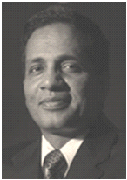 Lakshmanan Krishnamurti was born in the temple town of Madurai, India. He has lived in many places in India, first as the son of an Indian Air Force officer and then as a physician in the Indian Air Force. He moved to the US in 1993. He is currently a physician specializing in blood diseases, cancer and bone marrow transplantation in children.
Lakshmanan Krishnamurti was born in the temple town of Madurai, India. He has lived in many places in India, first as the son of an Indian Air Force officer and then as a physician in the Indian Air Force. He moved to the US in 1993. He is currently a physician specializing in blood diseases, cancer and bone marrow transplantation in children.
The article by Sridevi Rao James in the last issue raises important questions on how to sustain Hindu institutions in the United States. Rao James observes that as the first generation of founding Hindus slowly fades away, the mantle of leadership will have to pass to the next generation born and raised in the US. At first glance, this appears to be an obvious an inevitable change. However, public institutions are living organisms with a natural life cycle of growth, maturation, stagnation, even decay. They can also change course according to the people who participate and run these institutions. The composition of the worshippers and leadership of religious institutions set up by immigrant communities in the US will change over time. Many may even cease to function as the founding members of their congregation age and eventually fade away.
Ms. Rao James says, depending on only new Indian immigrants to take care of the temples is not only shortsighted but also likely to further alienate the already disengaged Hindu Indian-Americans born and raised here. The alienation of US born Indian-Americans from Indian immigrant students and their institutions is evident on university campuses. However, there is a distinction between college students who may be still grappling with their own identity and their need to fit in and adults who are trying to raise children in their own cultural traditions.
In Hindu temples across America, Indian immigrants, US-born Indian children and adults, American spouses, interracial children and some children and adults with no Indian heritage at all, all worship and participate in the various classes and activities, motivated by their interest in the Hindu tradition. That these individuals with diverse backgrounds are able to participate in the activities of the temple indicates that these institutions not only welcome people from different backgrounds, but also accept the attitudes and values people from diverse backgrounds.
If US-born Hindus overcome their reservations and become involved in these institutions, they will fit in very well..
There are however, many challenges that we face to make our institutions relevant and attractive to our young people. Attendance of children in Temples drops off after 10th grade though some young college students continue to attend. Hindu temples in the US are thriving largely because of the dedication of the large number of recent immigrants and the organic link they provide to India. However, the seemingly unending supply of immigrants from India is subject to change by social, political and economic forces.
While many Indian immigrants view their institutions through the prism of caste, region, language, and social mores as they existed at the time of their emigration from India, others are completely turned off by these.
For too many immigrants, the temple is merely a salve against social isolation and a means to get the acceptance they seek, but do not seem to get elsewhere.
As the new immigrants have struggled to adapt to the American mainstream, a whole generation of American-born Hindus have come of age. They take for granted the fruits of the struggles of their parents. Besides, youngsters, often pushed by their families to excel in school and at work, have had neither the time nor the opportunity to acquire more than a superficial familiarity with their culture and religion.
Many living in biracial and two-religion households may find the institutions of the non-Hindu/Indian half of their families more welcoming.
US-born Hindus may be different from their Indian born parents, but that does not make them less deserving of celebrating their religion, culture, and heritage. We ignore this shift in the demographics at the peril of losing the long-term viability of our institutions.
How do we attract and retain the interest of this generation? The
answer is astonishingly simple. We, who are rediscovering Hinduism in America, need to restore temples from their recent role as mere places of worship, to their traditional place as centers of social and cultural life of our communities. This holds the possibility that American-born Hindus will be drawn to these places during the different transitions in their lives. We must also actively recruit US born Hindus of every age to our temples, trust them, and give them responsibility of running it.
Like Rao James, I too believe it is time to be creative and thoughtful about how to bring our youth back into the fold. Otherwise, Hindu temples all across the US built with love by a whole generation of immigrants may survive only as museums.
Editor’s Note: We thank all the authors who came forward to share their thoughts and ideas on this thread of topic. This topic, we hear, has triggered lot of table-topic discussions in many homes and gatherings of our readers.

